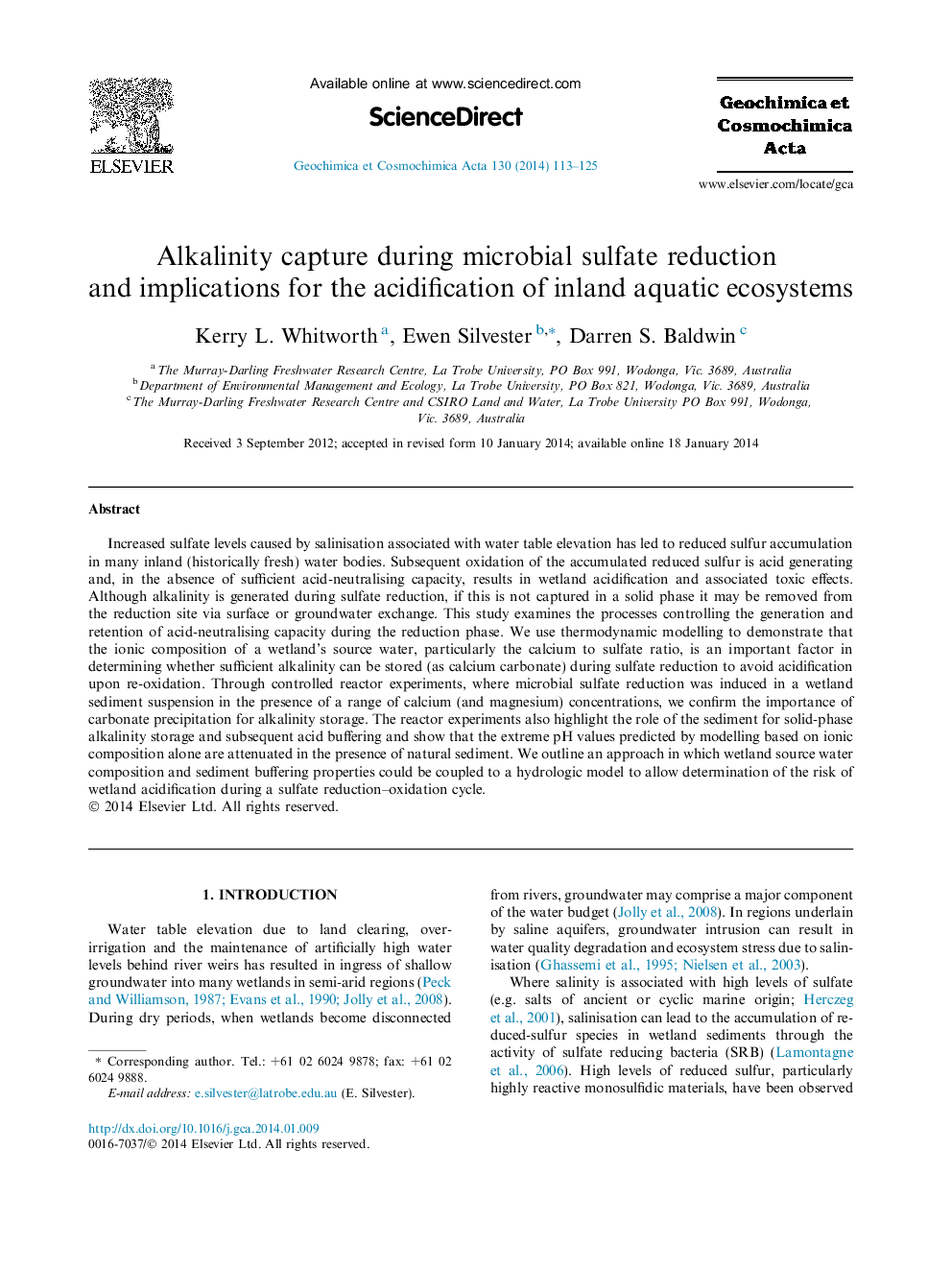| کد مقاله | کد نشریه | سال انتشار | مقاله انگلیسی | نسخه تمام متن |
|---|---|---|---|---|
| 4702165 | 1638027 | 2014 | 13 صفحه PDF | دانلود رایگان |
Increased sulfate levels caused by salinisation associated with water table elevation has led to reduced sulfur accumulation in many inland (historically fresh) water bodies. Subsequent oxidation of the accumulated reduced sulfur is acid generating and, in the absence of sufficient acid-neutralising capacity, results in wetland acidification and associated toxic effects. Although alkalinity is generated during sulfate reduction, if this is not captured in a solid phase it may be removed from the reduction site via surface or groundwater exchange. This study examines the processes controlling the generation and retention of acid-neutralising capacity during the reduction phase. We use thermodynamic modelling to demonstrate that the ionic composition of a wetland’s source water, particularly the calcium to sulfate ratio, is an important factor in determining whether sufficient alkalinity can be stored (as calcium carbonate) during sulfate reduction to avoid acidification upon re-oxidation. Through controlled reactor experiments, where microbial sulfate reduction was induced in a wetland sediment suspension in the presence of a range of calcium (and magnesium) concentrations, we confirm the importance of carbonate precipitation for alkalinity storage. The reactor experiments also highlight the role of the sediment for solid-phase alkalinity storage and subsequent acid buffering and show that the extreme pH values predicted by modelling based on ionic composition alone are attenuated in the presence of natural sediment. We outline an approach in which wetland source water composition and sediment buffering properties could be coupled to a hydrologic model to allow determination of the risk of wetland acidification during a sulfate reduction–oxidation cycle.
Journal: Geochimica et Cosmochimica Acta - Volume 130, 1 April 2014, Pages 113–125
